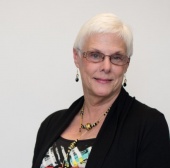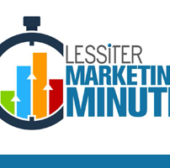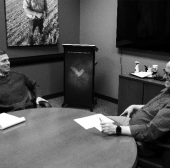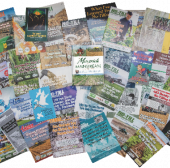By Jeremy McGovern, Executive Editor/Publish of American Farriers Journal
By attending media conferences and workshops, we undoubtedly benefit through networking — introductions to new processes and sessions that can validate (or refute) what we've been doing. However, it is also essential that we learn success stories from our media peers to apply to our audiences and advertisers for revenue growth.
One of the great LM examples of "stealing smart" from another publisher started about 11 years ago with Frank attending the first Niche Media event. He listened to a presentation in which a representative of American Funeral Director magazine detailed their successful publication written for mortuary school graduates.
On my second day at LM, Frank told me about the mortician group's special publication and gave me 10 months to duplicate the idea for American Farriers Journal. More than a decade later, AFJ has produced 11 editions of Getting Started in Hoof Care, a publication for farrier school students and graduates. Although the financial aspect is important, there are other important points to highlight about the issue.
Service to the reader. Farriers with 3 or fewer years of experience comprise the most difficult audience segment for us to reach. By nature, they are largely transient, and the attrition rate is high. Getting Started helps us reach this elusive audience and introduce our other products to them. The goal is to contribute to their success and make lifetime customers.
A lack of business acumen is the primary reason farriers fail. To help farrier graduates survive those tough, early years, Getting Started focuses solely on business practices. Their time in farrier school is spent mainly on anatomy and the mechanics of the job, so business is not adequately addressed. Bob Smith, owner of Pacific Coast Horseshoeing School, tells me that our publication has made an incredible impact on his students and graduates.
"With this issue, AFJ has collected the experiences of so many experts," he says. "These sources have prospered because they have failed and persevered. By reading this issue, my students learn how to avoid duplicating costly mistakes that can ruin a farrier business."
Winning formula. As with any repeatable action, the first time is the hardest to accomplish. After producing a few editions, we generated a large volume of material and recognized the essential topics for the audience. This revealed an easily repeatable production formula. The majority of the content is pulled from previous editions of Getting Started, and about 25% is pulled from the previous year of AFJ. The remainder are new pieces written by staff and freelancers. This formula has improved the efficiency of the issue's production and minimized production costs.
Efficient distribution. We bulk-ship these issues multiple times a year to the dozens of farrier schools in North America. We also give these out at many of the farrier events we attend, including our International Hoof-Care Summit. This streamlined distribution, keeps costs low and helps us reach the multiple sessions each school holds per year.
Innovation. Although there is a winning formula, it is crucial to experiment and keep this publication fresh. Over the years, we've introduced a Spanish edition, increased distribution and added other new wrinkles to increase its exposure and improve our advertisers' investments.
It is a team effort to produce Getting Started. Among the many contributors, let's congratulate Amy Johnson and Sarah McQuin for the seventh consecutive year of breaking the previous issue's revenue goal. Credit goes to Lewis Horn, Jeff Cota and Kristen Kubisiak for developing another edition that is a financial success for LM and will make a difference in the lives of its readers.
We don't have to rely solely on media events to pick up revenue ideas. It is also crucial to identify winning ideas from LM's various properties and spin them for greater success within the company.





